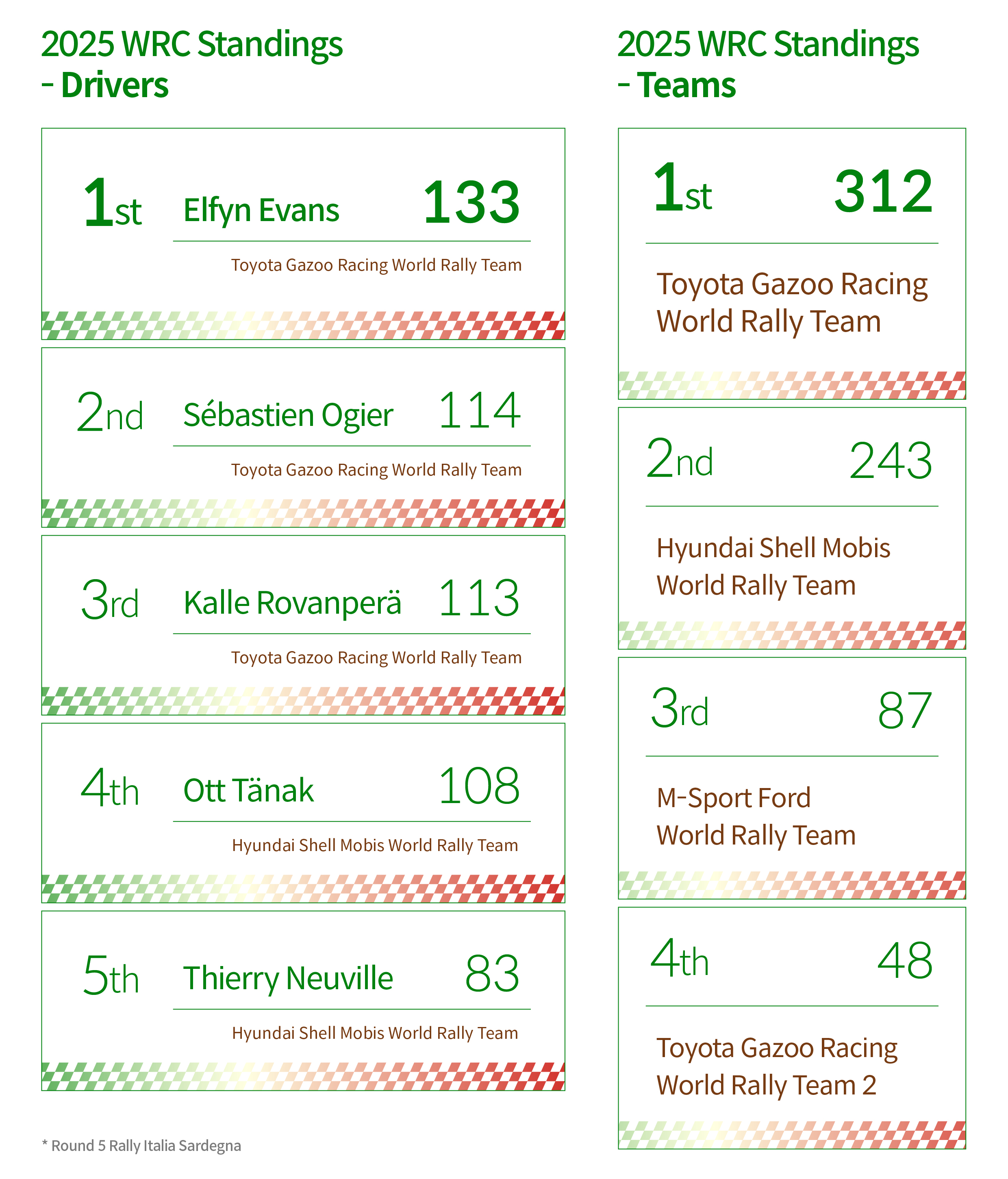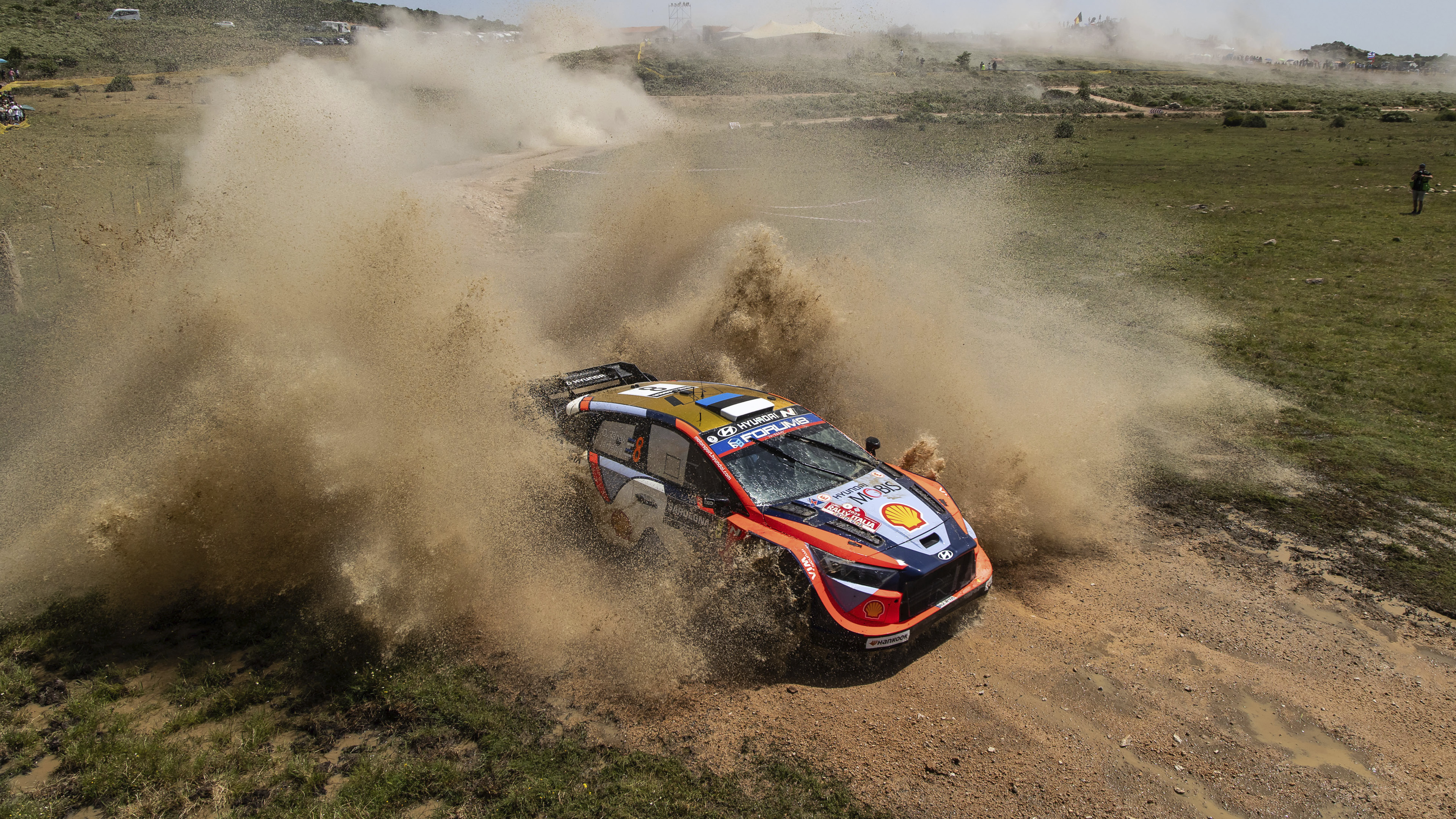



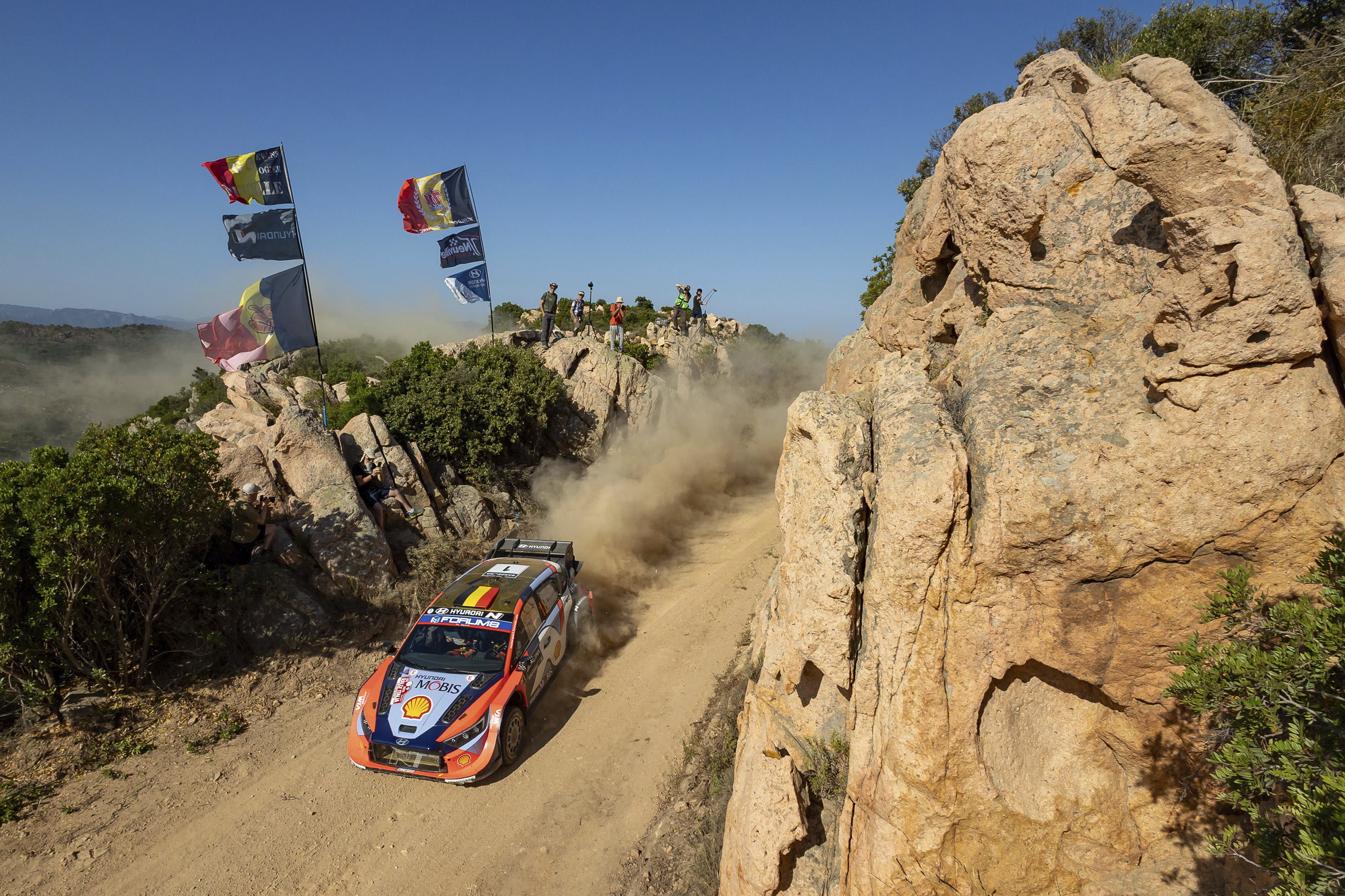
Held around the port city of Olbia, Rally Italia Sardegna is a tight, technical gravel event cutting through the forests and hills of the nation's second-biggest island. Though part of the WRC calendar from the very beginning, the rally originally ran on Sanremo’s paved roads. Financial issues forced the event to relocate in 2004, transforming it into one of the WRC’s most challenging gravel events.
Rally Italia Sardegna is unforgiving. Sharp rocks lie in wait, and the searing heat accelerates tire wear dramatically. Both man and machine are pushed to the absolute limit, where even the slightest lapse in concentration can end in retirement. No matter how comfortably you’re leading, this is a rally where you can never let your guard down. The attrition rate among the front-runners is so high that it’s not uncommon to see lower-class drivers crack the overall top five by the end of the weekend.
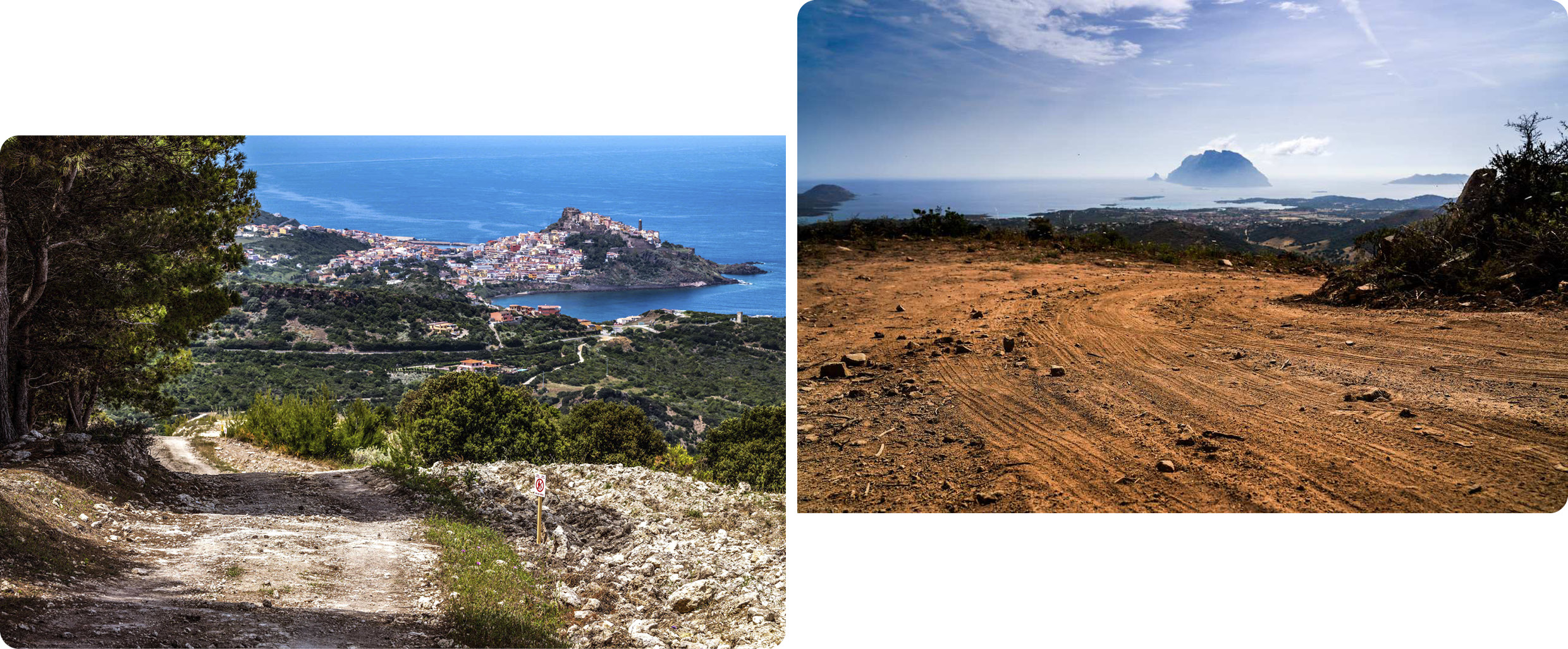
The rally base was originally set up in Olbia when the event moved to Sardegna. Although it briefly left the WRC calendar in 2010 for a scaled-down Intercontinental Rally Challenge (IRC) appearance, it returned the following year. While there were talks of relocating to Sicily due to budget concerns, those plans were averted. In 2014, the rally base shifted to Alghero on the island’s west coast, and the event has since alternated between Alghero and Olbia. This year, several stages returned to Olbia, and the all-new Porto San Paolo Power Stage made its WRC debut.
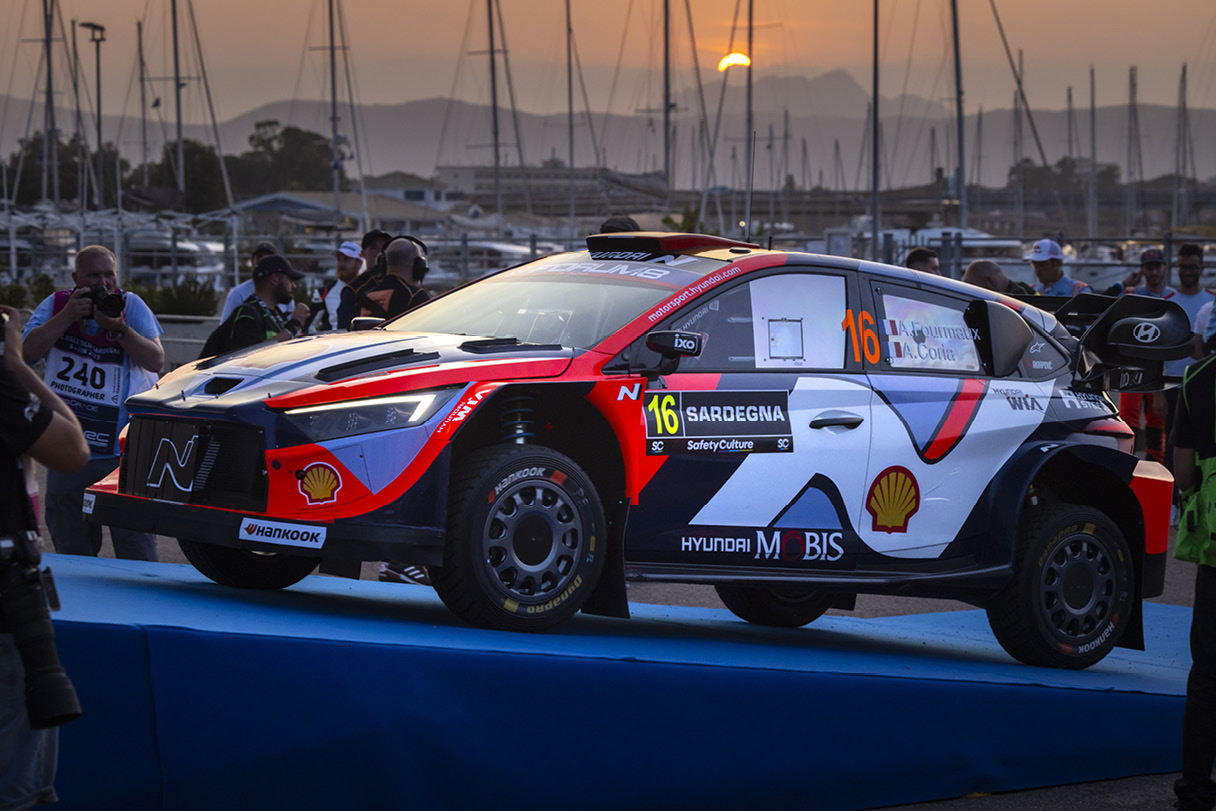
Hyundai Motorsport continued fielding three Rally1 cars: Thierry Neuville, Ott Tänak, and Adrien Fourmaux. The team has a strong history in Sardegna, boasting seven wins overall. Neuville alone has taken three victories here (2016, 2018, and 2023), including a nail-biting win over Sébastien Ogier in 2018 by just 0.7 seconds.
Tänak has also triumphed three times, starting in 2017, and famously edged out Ogier last year by 0.2 seconds—the narrowest victory margin in WRC history.
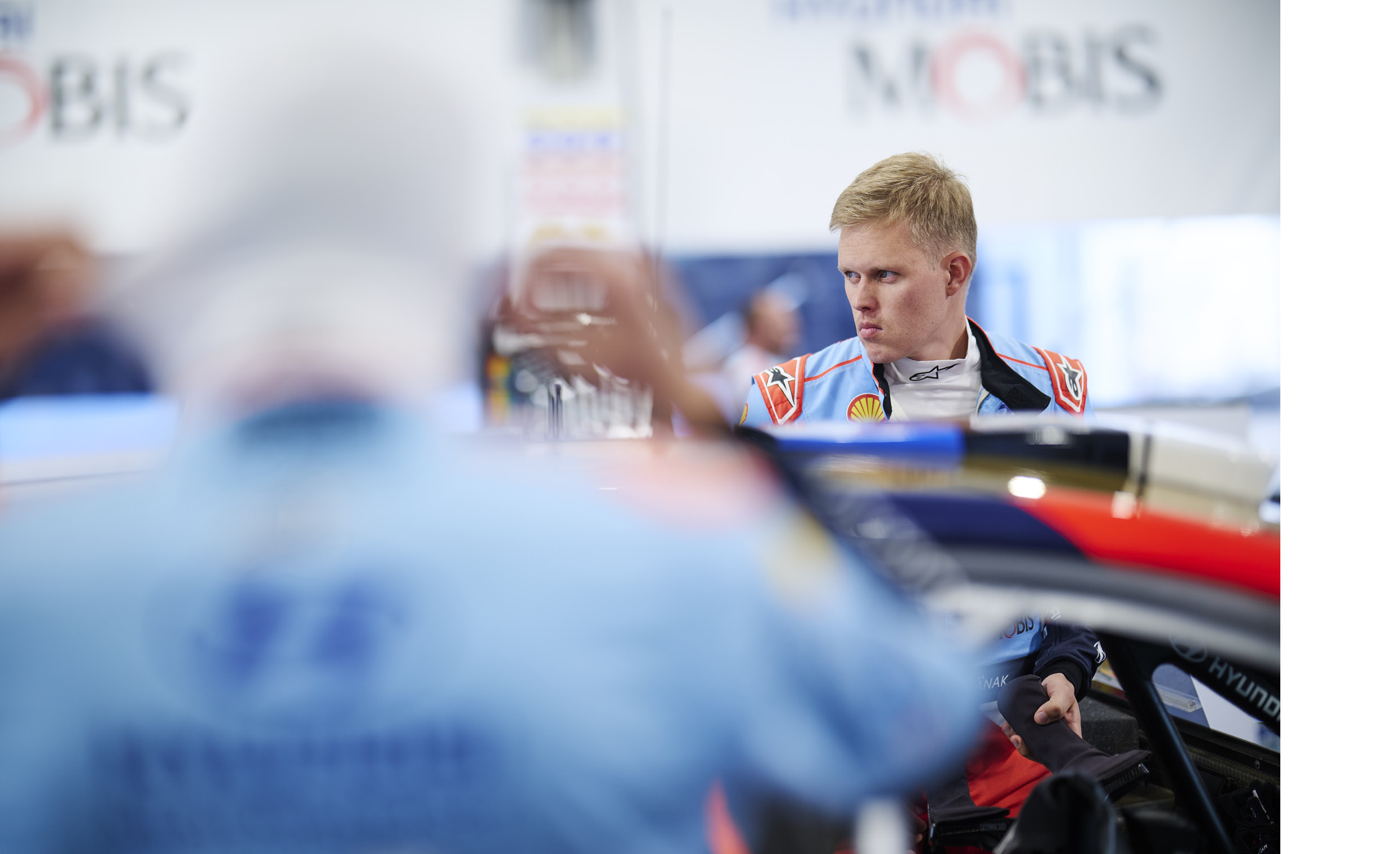
“Sardegna is another super punishing event,” Tänak said. “At first, it can look smooth and sandy, but the roads normally develop quickly. We can sud-denly find solid rocks sticking out from the ground, which will make life hard for both the car and tyres. Hopefully, we have done our homework and we are going to be on the pace from the start!”
Fourmaux entered with confidence since the beginning. (Source: WRC, http://www.wrc.com)
While known for his tarmac prowess, Fourmaux surprised everyone with his strong gravel performance in Portugal. Aiming for his first Sardinian podium, he noted,“We had really good pace on Friday morning in Portugal, but we all know that Rally Italia Sardegna can be a bit different. We got an understanding of how well the tires are working in the dry conditions; we can push hard and tyre wear is not so bad.” He also highlighted, “The surface in Sardegna is a bit sandier, and there are some super narrow passes. It’s challenging because you want to commit fully, but there’s not much margin for error. We need to have a clean rally and score some good points for the team – this is crucial for our fight at the moment.”
Toyota went all-in once again, fielding five Rally1 cars for the third consecutive event. The factory team featured Elfyn Evans, Kalle Rovanperä, Sébastien Ogier, and Takamoto Katsuta, while satellite driver Sami Pajari rounded out the five-car Yaris Rally1 squad. With more cars on the ground than Hyundai, Toyota enjoyed a clear edge when it came to tire strategy and setup data—an advantage they've capitalized on since the start of the season.
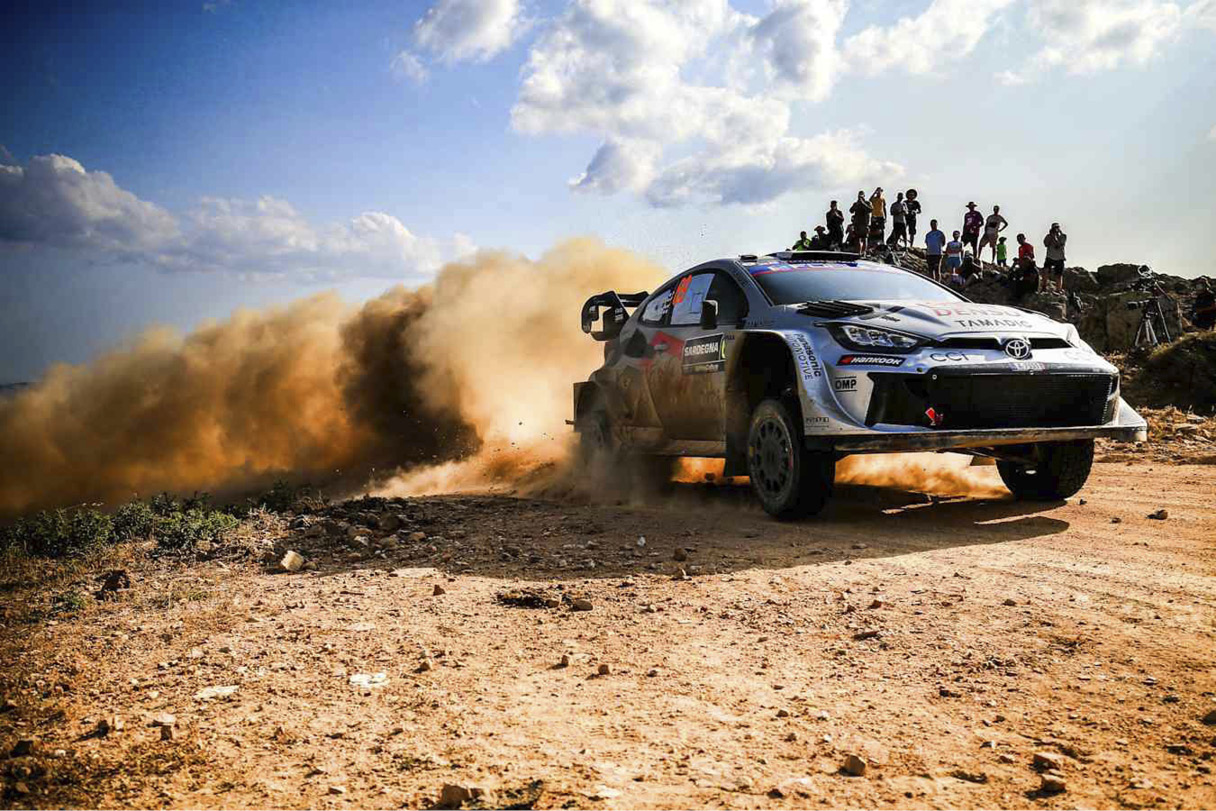
The only team to make a driver change for Sardegna was M-Sport Ford. Grégoire Munster, Josh McErlean, and part-timer Mārtiņš Sesks returned, while Greek privateer Jourdan Serderidis made his comeback appearance in a fourth entry.
In WRC2, 34 cars were registered—down from the previous round in Portugal. The field included championship leader Yohan Rossel, along with Jan Solans, Roope Korhonen, Kajetan Kajetanowicz, Nikolay Gryazin, and Fabrizio Zaldivar. Notably, nine of the entries were not registered to score points at this event. Under WRC2 rules, teams must designate specific rounds to earn points—even if they win, results from non-nominated events don’t count toward the championship.
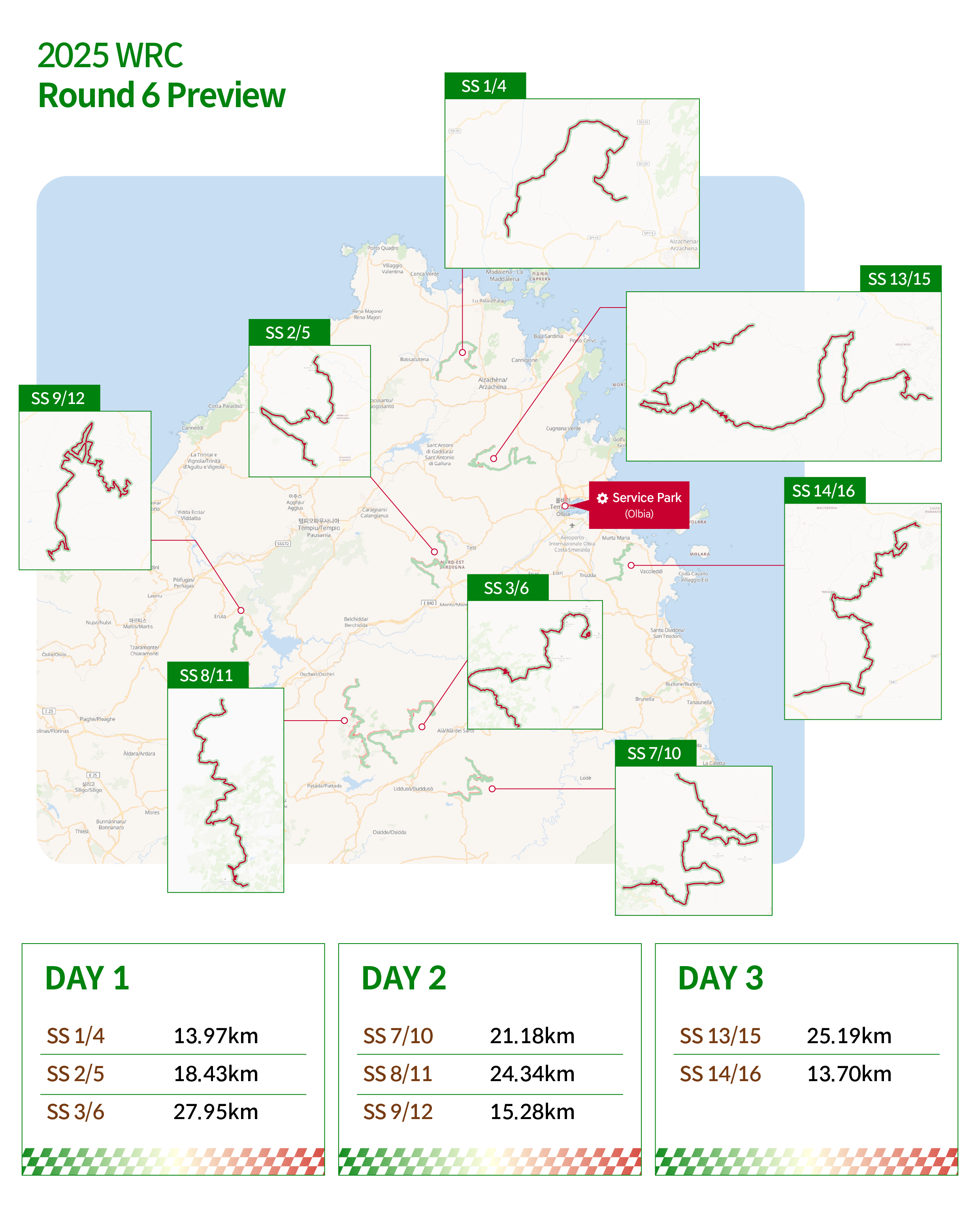
Friday, June 6, marked the opening leg of the rally, covering six special stages (SS1 to SS6) across the Gallura region for a total of 120.7 kilometers. The day kicked off with the 13.97 km Arzachena stage, followed by the 18.43 km Telti–Calangianus–Berchidda, and capped off by the rally’s longest test—27.95 km of Sa Conchedda. The three stages were then repeated in the afternoon loop.
Arzachena is a local classic—fast, flowing, and popular with fans thanks to its gentle rhythm and approachable layout. This year, the final portion of the stage was slightly reconfigured. Telti–Calangianus–Berchidda, which served as SS2 and SS5, brought a radically different character—tight, technical, and constantly evolving in surface grip. It climbed into sharp hairpins, transitioned across paved segments, and even traced parts of an old railway line, offering just enough room to push the pace.
In SS2, Tänak and Neuville scored a Hyundai 1–2 finish. In SS3, Fourmaux set fastest time, lifting team spirits. (Source: WRC, http://www.wrc.com)
Sa Conchedda, used in SS3 and SS6, was the longest and most demanding stage of the rally. It crossed the rugged Monte Acuto mountain zone, linking the towns of Alà dei Sardi and Buddusò. Once past the opening, drivers faced rough gravel, river crossings, and crowd-pleasing jump zones. Sébastien Ogier, the quickest in pre-rally testing, took the opening stage win. But Hyundai's trio came out swinging—noticeably more competitive than they had been earlier in the season.
Tänak and Neuville went 1–2 on SS2, then Fourmaux lit up SS3 with the fastest time. By the end of the morning loop, Fourmaux was leading the rally, followed by Neuville, Ogier, and Tänak. SS4 saw Tänak set the pace again, with Neuville close behind in second. That stage reshuffled the leaderboard, propelling Neuville past Fourmaux into the overall lead.
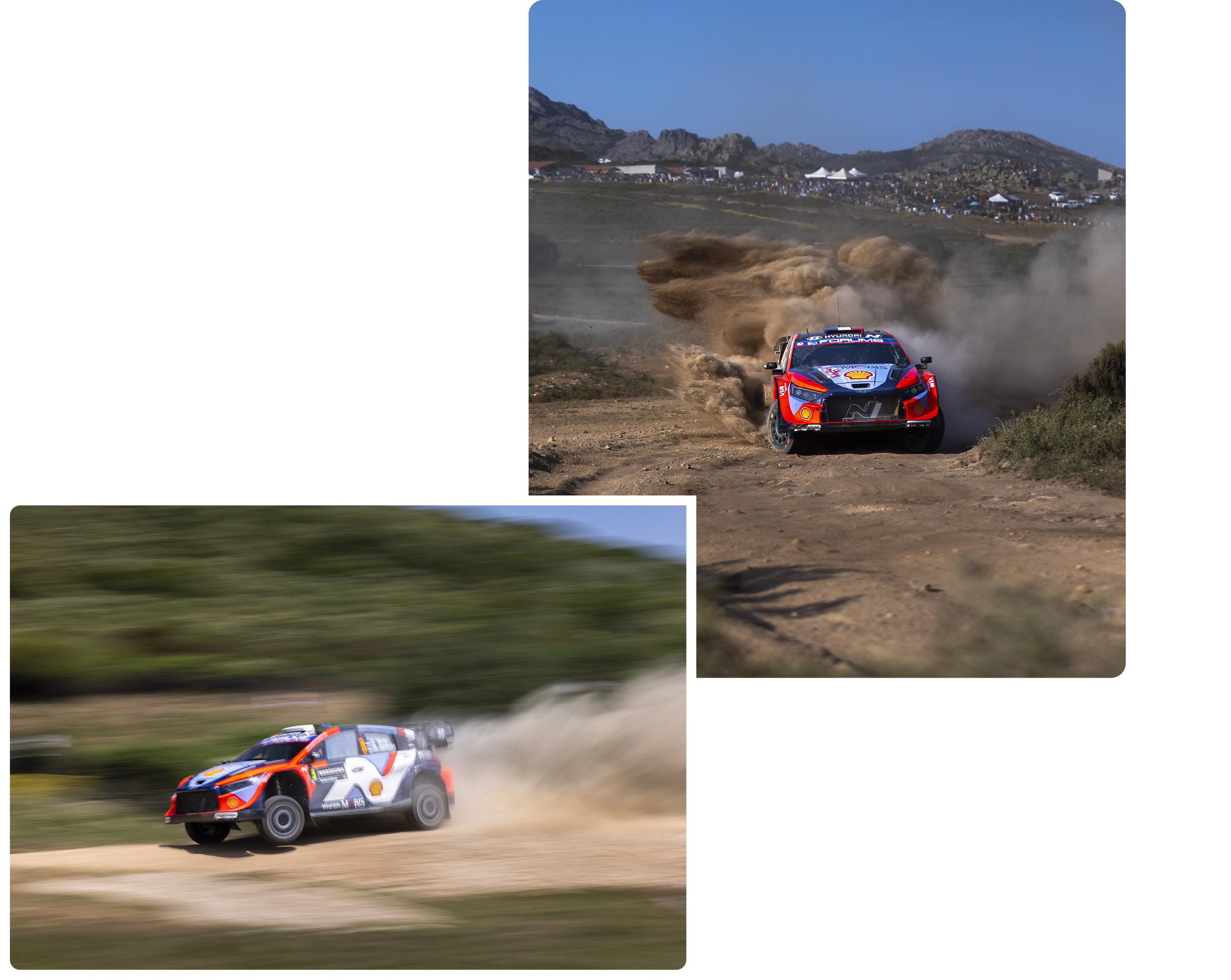
Not everyone made it through unscathed; Neuville’s rally ended in heartbreak on SS5 when he ran wide through a fast jump section, slightly sliding off and damaging his left rear suspension—forcing a retirement. He wasn’t the only one in trouble. Katsuta rolled in a hairpin and lost over a minute, but others fared worse. M-Sport suffered a near-total wipeout with Munster, McErlean, Sesks, and even Serderidis all getting caught out. Aside from the privateer Serderidis, all three M-Sport Rally1 entries were forced to retire.
Serderidis of M-sport rolled out at a corner in SS5. (Source: WRC, http://www.wrc.com)
Kalle Rovanperä took the SS5 stage win, and Adrien Fourmaux reclaimed the overall lead. Every stage seemed to bring a new leader, with time gaps razor-thin. On SS6, Ogier surged back to the top with the fastest time. Meanwhile, Fourmaux struggled with grip, and Tänak lost some pace due to damper issues from the previous stage. At the end of Friday, Ogier led with Fourmaux just 2.1 seconds behind and Tänak 7.3 seconds adrift. Pajari and Rovanperä rounded out the top five. Elfyn Evans, burdened with road-sweeping duties as championship leader, was sixth. In WRC2, Gryazin held the lead ahead of Emil Lindholm and Yohan Rossel.
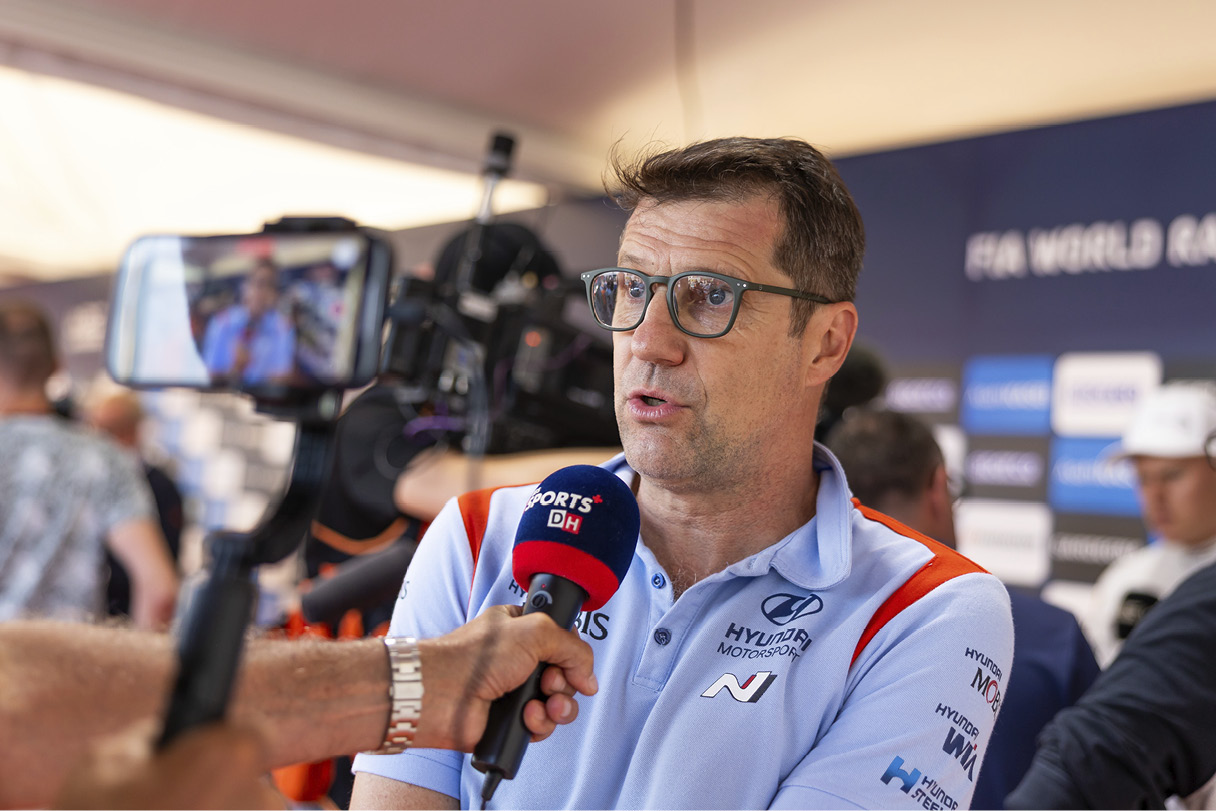
“It is a shame we are not ending the day with all three cars in the fight," said Hyundai technical director François-Xavier Demaison. "But it has been a good day for us here in Sardegna. All of our crews were competitive and had the pace to fight for the podium positions, as well as the lead. Sardegna is always difficult, and while you can’t win on the first day, you can most certainly lose. There is no denying it will be close until the end – as we know very well from last year – but our performance today is definitely encouraging as we head into the rest of the weekend.”
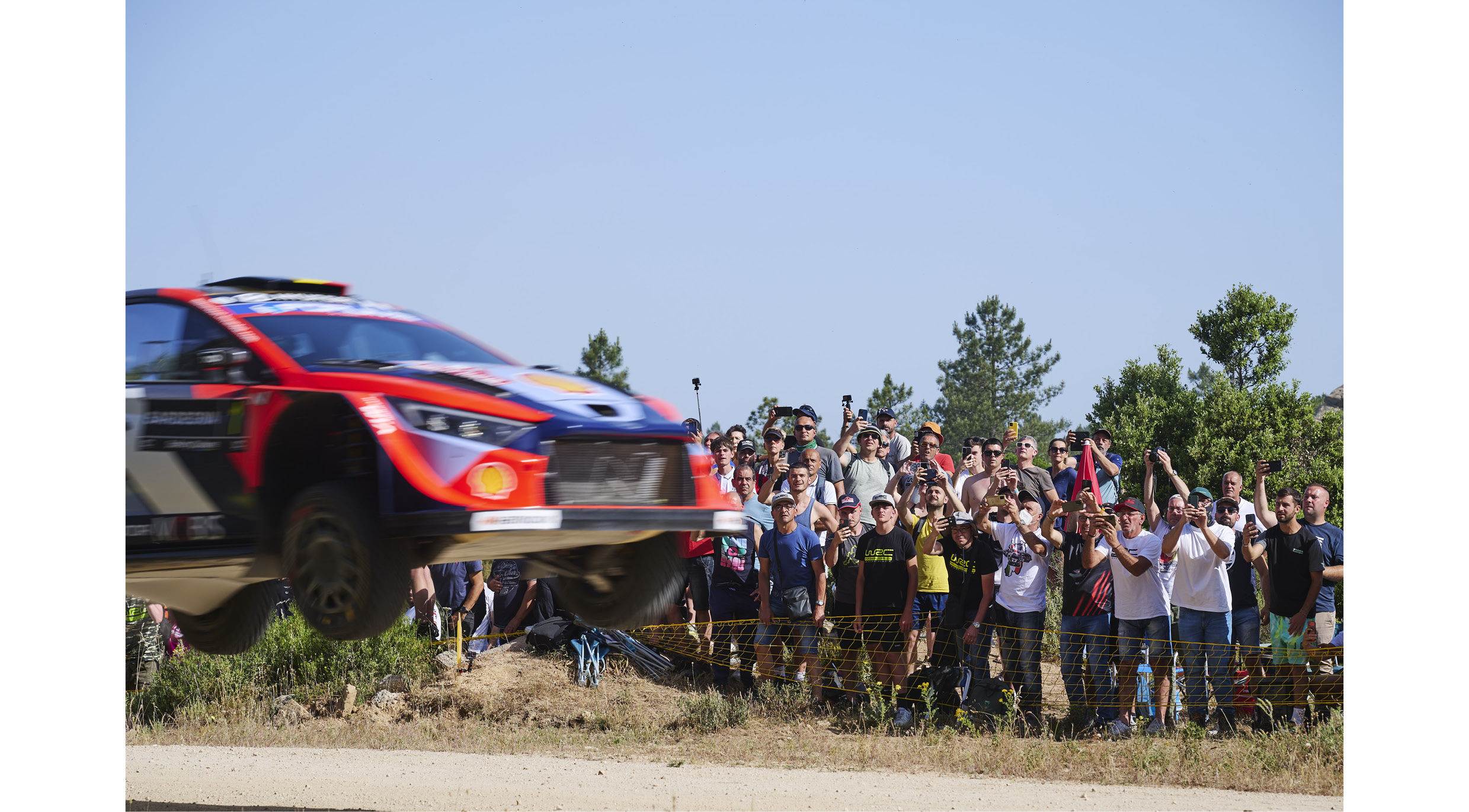
Saturday’s itinerary featured six more stages (SS7–SS12), stretching 121.6 km—longer than Friday—and even tougher on tires. It opened with Coiluna–Loelle (21.18 km), followed by Lerno–Su Filigosu (24.34 km), and Tula–Erula (15.28 km), all of which were repeated in the afternoon.
Coiluna–Loelle kicked off the day in dramatic fashion with its signature jump near the lake, drawing huge crowds. The stage ends with the iconic Loelle hairpin, framed by ancient Nuraghe ruins unique to Sardegna. SS8/SS11 Lerno–Su Filigosu is one of the rally’s most legendary tests, starting at 1,000 meters elevation and descending through a twisting forest trail. There’s no room for error here. The famed “Micky’s Jump” offered another hotspot for jaw-dropping photos.
Fourmaux ran wide in SS9 and dropped to ninth overall. (Source: WRC, http://www.wrc.com)
Tula–Erula closed out the loop with a high-speed and highly technical rhythm that constantly shifted, demanding max concentration. The running battle between leader Ogier and Hyundai's chasers Tänak and Fourmaux dominated the day.
Ogier took SS7. Tänak struck back in SS8, slicing 6.5 seconds off Ogier’s lead. Dust kicked up by Fourmaux’s car hampered Ogier’s visibility, and organizers later adjusted his time. Fourmaux’s day unraveled when a puncture dropped his pace dramatically—he fell nearly four minutes behind and dropped to seventh. SS9 saw Ogier clock fastest time again, opening a 15-second gap to Tänak, who suffered a slow puncture. Fourmaux struggled with dust inside the cockpit and ran off course, falling to ninth overall.
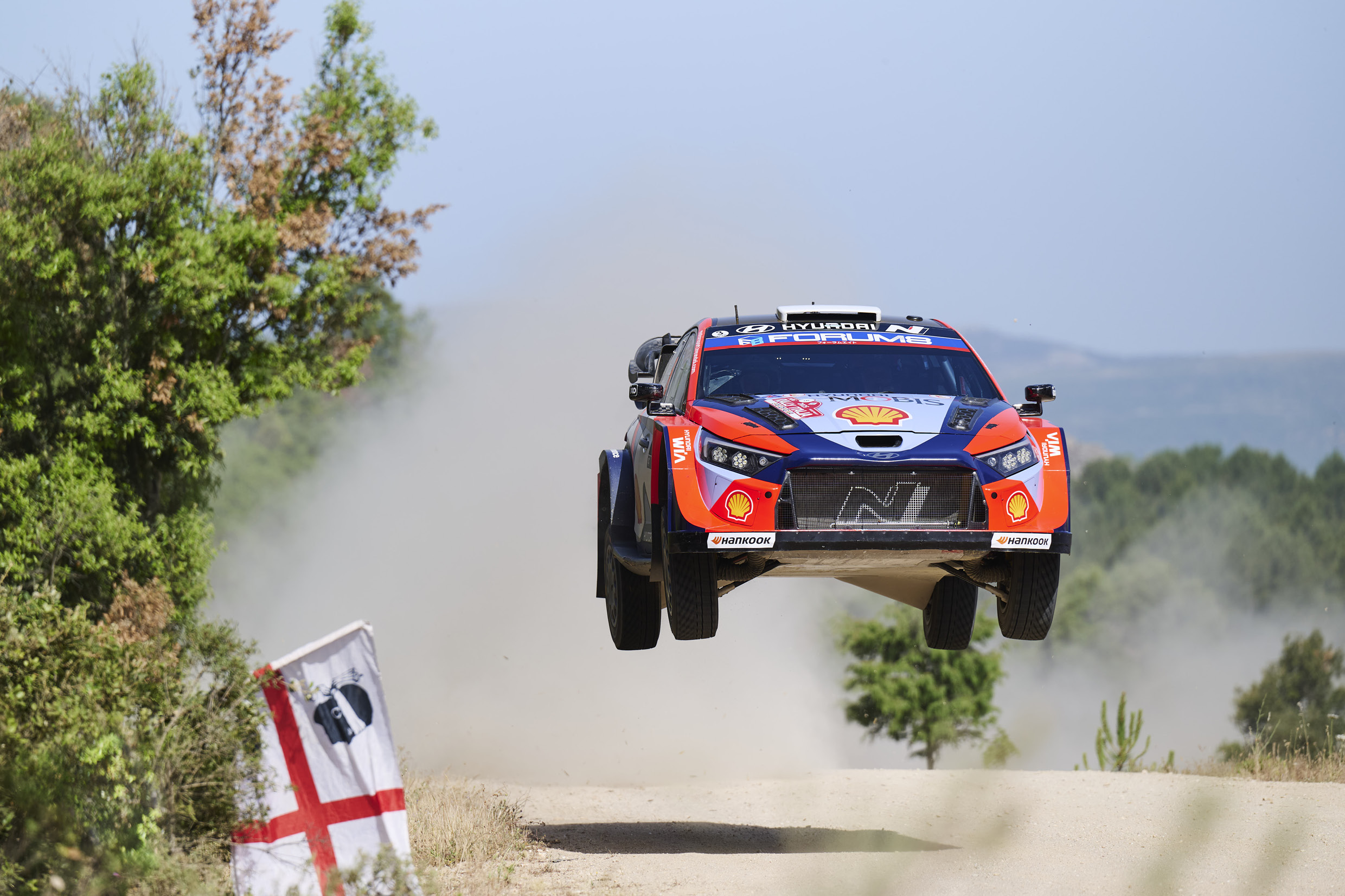
Tänak opened the afternoon loop by winning SS10, though he only trimmed 0.6 seconds off Ogier. Katsuta dropped from sixth to tenth after changing tires. Fourmaux battled back to seventh by passing several WRC2 cars, but disaster struck early in SS11—he rolled out just 1.9 km in. With Fourmaux out, Tänak became Hyundai’s sole contender and responded by taking another fastest time in SS11.
At day’s end, Ogier remained in control, extending his lead to 11.1 seconds over Tänak. Rovanperä moved into third, now 44.4 seconds behind Tänak. Evans, who changed tires during SS11, sat fourth, followed by Pajari. Thanks to high attrition, WRC2’s Gryazin climbed to sixth overall. Katsuta, Solberg, Lindholm, and Joona completed the top ten.
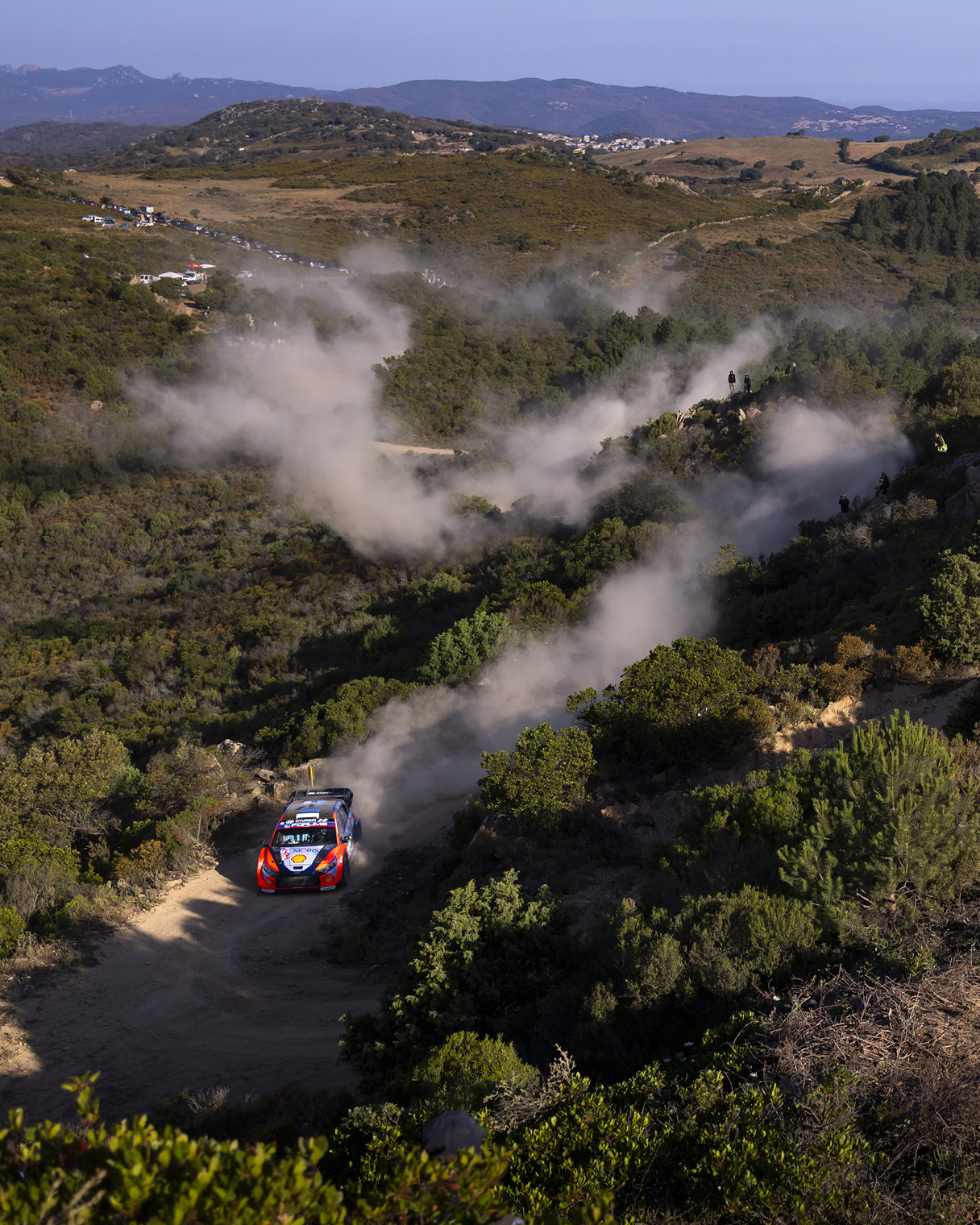
Sunday opened with a 25.19 km blast through San Giacomo–Plebi, a legendary test that returned to the rally for the first time since 2013. Long used as a manufacturer test stage, the route climbs sharply off the line, then descends over rocky, hard-packed ground peppered with tight hairpins and stream crossings.
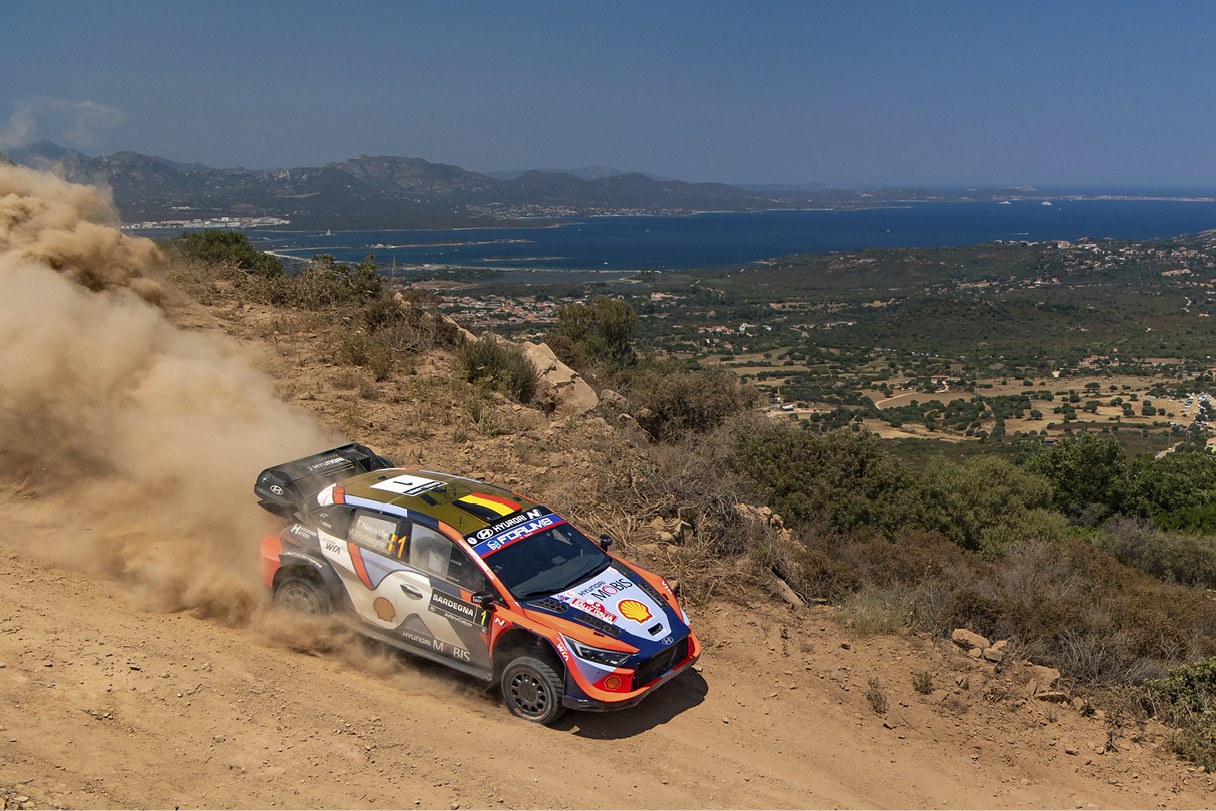
The rally wrapped up with a new Power Stage: Porto San Paolo (13.7 km), twice the length of last year’s, featuring stunning coastal scenery and a relentless mix of climbs, descents, and rhythm changes.
Ogier took the first stage of the day, while Rovanperä set the best time in SS14—a Power Stage dress rehearsal. Ogier’s lead over Tänak stretched to 19.7 seconds. Tänak won SS15 (San Giacomo–Plebi rerun), trimming the gap to 17.2 seconds. But there would be no repeat of last year’s upset. Though Ogier had a half-spin in the final Power Stage, he held on to take the win—tying Sébastien Loeb’s record of four Rally Italia Sardegna victories.
Ogier took the win, followed by Tänak and Rovanperä, locking out the podium. (Source: WRC, http://www.wrc.com)
Tänak secured second, with Rovanperä rounding out the podium. The rest of the top ten were Evans, Katsuta, Solberg, Pajari, Gryazin, Roberto Daprà, and Kajetanowicz. On Super Sunday, Rovanperä took top honors, followed by Tänak, Ogier, Evans, and Neuville. Because Solberg and Gryazin hadn’t nominated the round for WRC2 points, rising Italian talent Daprà pulled off a surprise win and pocketed 25 championship points.
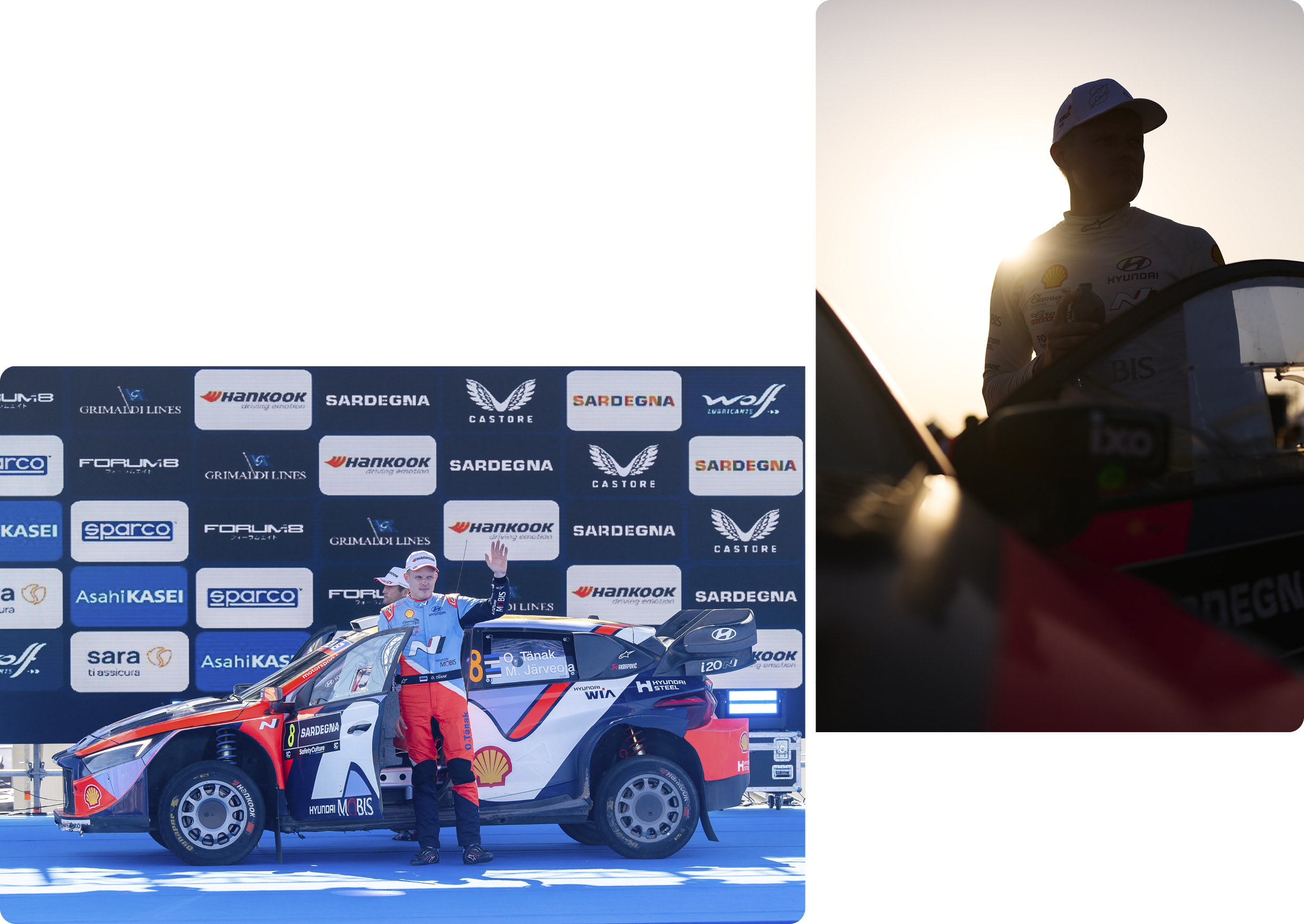
After six rounds, Evans still leads the championship with 133 points. Ogier follows with 114, just ahead of Rovanperä at 113. Tänak, with back-to-back runner-up finishes and 7 bonus points from Super Sunday and the Power Stage, sits at 108—closing fast. Neuville, who retired in Italy, ad-ded just 4 points and stands at 83.
Round 7 takes the championship to the infamous Acropolis Rally in Greece (June 26–29), where survival matters more than outright speed. After that, the high-velocity battles of Estonia and Finland await.
By Soo-jin Lee
In 1991, Lee’s passion for cars led him to enthusiastically write letters to the newly launched Korean car magazine
